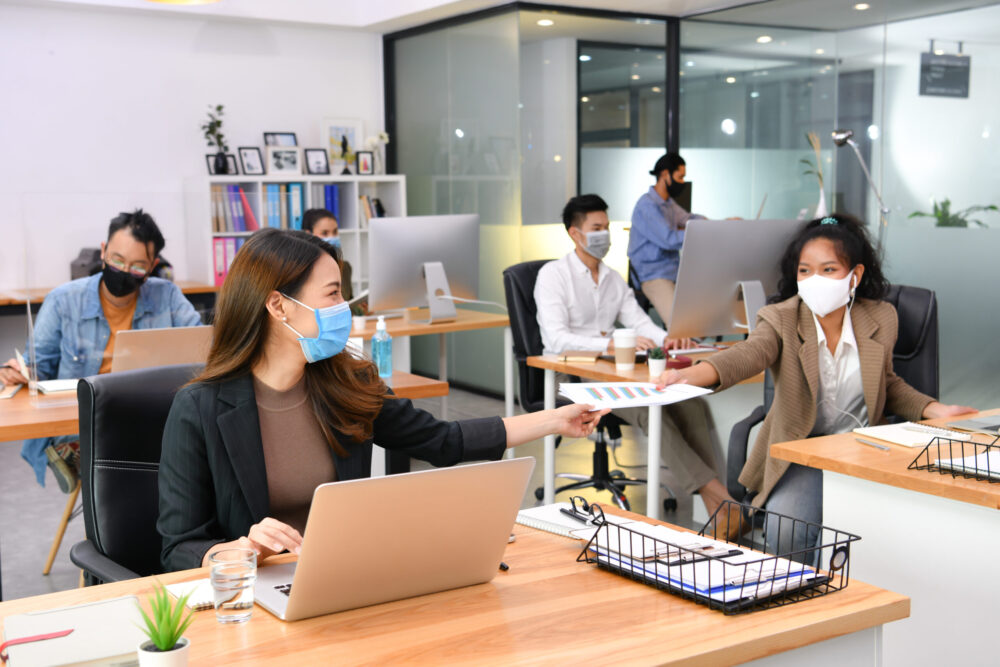Most likely, you and your employees enjoy the “flexibility” of working remotely, being able to have breakfast with family, reduced stress as a result of not having to commute, etc. However, at some point in the future, the pandemic will end. What will your organization look like when this happens? Or more importantly, what do you want your organization to look like post-COVID?
Do you want to add a day of remote work every week and hope productivity stays at acceptable levels? Maybe you want to add one or two days of remote work every one, two, or three weeks.
As you may have already experienced, there is little advantage in waiting for an event to take place and not having a plan to address it. Instead of reacting to an event, why not have a plan in place for not if, but when there is a post epidemic workplace.
Here are just a few considerations for planning for your post-pandemic workplace:
- Visualize what you want your work environment to look like – picture it in your head – envision it. Do you want to continue with remote work and the plan you currently have in place or do want to have the same work environment prior to COVID? How do you see people carrying out their work, day after day and week after week? What does the workweek look like? Whatever it is, visualize it.
- Productivity and Quality are a priority in any organization. Asking yourself and your management team if the workforce is happier now and more productive should be a question at the top of your list. Conversely, are you having difficulty managing your workforce and has productivity and or quality suffered as a result of remote work? These are important questions which should play a part in how you envision your future workplace.
- Communication is key. Once you have decided how you want your organization to operate in the future, you need to make sure that vision is accurately communicated. But before you do that you may want to have a discussion with key stakeholders and managers. They may be able to provide useful information related to the pros and cons of your plan. In any case, you should have a very solid idea of what the future holds. Begin with a conversation with your leadership team and relay to them your vision. Make sure they fully understand that vision and your expectations. Be specific, vagueness causes confusion and leaves room for interpretation which can result in your expectations not being met and problems in other areas of your organization, like issues of favoritism or noncompliance.
Make sure that your leadership team provides accurate and timely information to their subordinates. Your workforce communication efforts should be coordinated to ensure everyone receives the information relevant to them at the same time. This will reduce rumors, misinformation, and employees sharing information they received from their department leads with others to which it may not apply. Again, in those communications, make sure expectations, timelines, and communication requirements (especially as they relate to employee concerns) are clear.
- Workforce Autonomy is another area of consideration. Bringing people back to the office may come with challenges. Some of these challenges may come in the form of employee frustration. They have become accustomed to being autonomous and working when and how they want. Being prepared for this and thinking through how you will deal with these types of issues can only be beneficial. Returning to the workplace, commuting, and children’s reactions to another change in their routines are all sources of stress, which can impact employee attitude, performance, and maybe even civility in the workplace.
- Work or Project Teams are another important consideration, especially if they have not physically worked together for an extended period. People working in teams need to get to know each other again. Meeting online to work together has a different dynamic, especially when it comes to reading people’s body language and facial expressions whether they be positive or negative. People are better able to perceive these things in person and this, coupled with stresses that team members may be experiencing may prove problematic. Not to say these potential issues will absolutely occur, but they are plausible. You and your workforce will be better served thinking through this consideration.
These are just a few points to ponder in preparing your organization for a post-COVID workplace. Change is difficult for any organization but thinking through some of these important topics while developing a cohesive plan to address them will help make your transition smoother.







